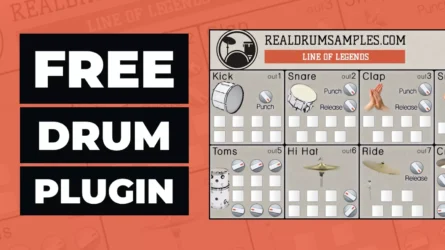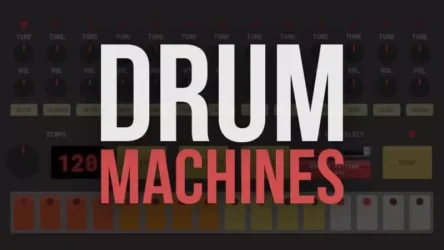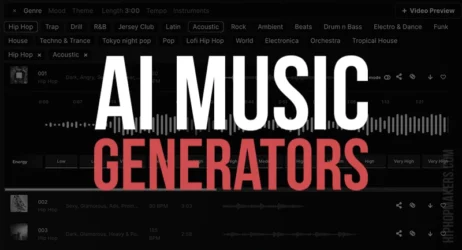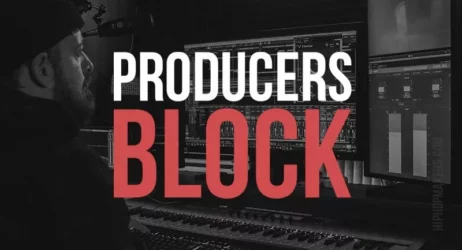This guide will answer what is a music staff, the different types of staff, explain how it is different from a clef & stave, and why the musical staff is important for composing.
What Is A Music Staff?
The musical staff is a set of 5 parallel lines on which musical notes are placed. The pitch of the note goes higher as we place it higher on the staff. The distance between each line of the staff is called the ‘height,’ which denotes the note’s pitch.
- What Is a Music Staff
- Names Of Music Staffs
- What Are The 7 Musical Notes
- Types Of Music Staff
- Why Is The Musical Staff Important
- What Is The Order Of The Music Staff
- Staff vs. Clef vs. Stave
- How Many Spaces Are There In A Staff
What Is a Music Staff?
The purpose of staff in music is to show the different pitches that should be sung or played. A staff is a series of five parallel lines with the clef sign placed on one line.
The order of musical staff starts with bass, then tenor, alto, and soprano. The treble is placed at the top of the staff.
The modern musical staff has five lines and four spaces. The musical staff is also known as a score or stave. It helps the musicians and singers to play or sing different notes.
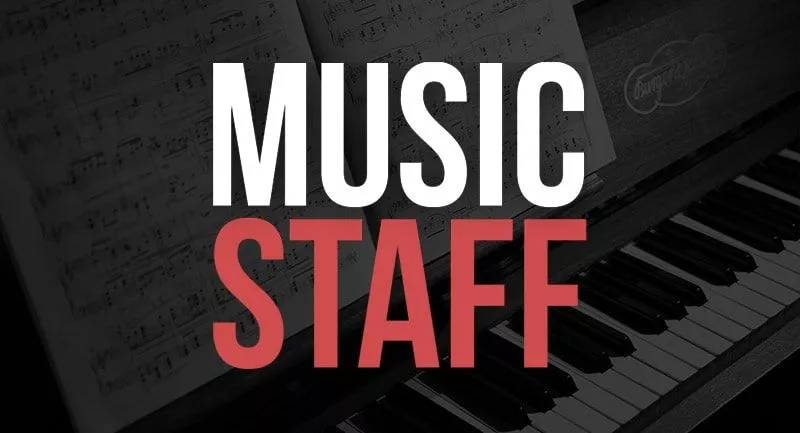
The staff is divided into the upper, middle, and lower semicircles.
Each semicircle is known as a clef. The treble clef is at the beginning of the staff, and it indicates that notes will be higher. Similarly, the bass clef is on the fifth line, meaning lower notes.
What Are The Components of a Staff In Music?
The basic components of the staff are as follows:
1. Stave
A stave is a set of 5 parallel lines and their width and height. It also includes the space in between them.
2. Bracket
A bracket is used to show the octave of a particular note, especially when it is beyond the human voice range.
3. Brace
A brace is used to show the pitch of a chord if two or more notes are played at once.
4. Clef
A clef is placed on one line of the staff. The clef helps to determine the pitch of notes. There are two types, namely treble and bass clef.
5. Ledger Lines
Ledger Lines are drawn on each side of all five lines and four spaces to show the exact pitches.
6. Notes
Notes are the written symbols that represent sound in music. They consist of different parts like air, stem, note head, and beam. The notes are placed on the staff to determine their pitch.
7. Accidentals
Accidentals are symbols that represent notes that should be played sharp, flat, or natural (without any alterations).
8. Key Signature
A key signature is a series of sharps or flats that help to determine the sequence of notes.
9. Time Signature
Time Signature is two numbers placed on the staff representing the number of beats in a measure.
10. Barline
A barline is a line that joins multiple notes together. The bar lines are vertical. They are used to indicate the end of phrases, sections, or compositions.
11. Double Barline
A Double Barline is a line that joins the end of the music with the beginning. It is used to indicate that there will be an upcoming repeat or if it is the final form of the music.
12. Final Barline
The final Barline is a barline that is drawn below the baseline. It implies the end of a section, movement, or composition.
What Are The Names Of The Music Staff?
The music staff comprises five parallel lines and four spaces. Each line or space is assigned a letter name. The five lines of a musical staff, from bottom to top, are E, G, B, D, and F.
The four spaces are also assigned letter names. They are F, A, C, and E from bottom to top.
Thus, on a piano keyboard, the white keys will correspond to the letter names E through G, and the black keys will correspond to the letters B through F.
What Are The 7 Musical Notes?
The seven basic musical notes are A, B, C, D, E, F, and G. These notes in a music staff go from left to right. This is the same order as the piano keys. Different symbols represent musical notes instead of writing out each letter’s name.
There are eight white keys and five black keys on the piano between the two E notes. There are other notes in music besides these seven letters or notes.
To indicate that a note is higher or lower than the seven basic notes, a note is placed either higher or lower on the staff.
What Are The Different Types Of Staff In Music?
There are two different types of musical staff in music. Each one has a specific goal when writing music. The two types are:
1. Treble Staff
The treble staff is also known as G-clef. It is the most commonly used clef in music notation. The G-clef is also known as the “G line” or “G staff.”
The line in the middle of the staff is a G-clef, which indicates that the note G will be placed on that line. The treble staff is used for sounding notes higher than the bass note.
2. Bass Staff
The bass staff is also known as the F clef. The F-clef is one of the most common clefs in music notation. It is also known as the “F line” or “the fourth line.”
The line below the middle line of the staff is an F-clef. The F-clef tells us that the fourth line of the staff is an F note. The bass staff is used for sounding notes that are lower than the treble clef.
Some Other Types of Staff
There are also two other types of musical staff in music. These are:
1 – Single Staff
The single staff is used for sounding notes higher than bass clef notes. The single staff comprises the treble, G-clef, and bass clefs.
2 – Grand Staff
The grand staff is used for sounding notes higher than the single staff notes. It is made up of two parallel staves. The grand staff uses both treble and bass clefs.
Why Is The Musical Staff Important?
The musical notes are independent of language, and they are not specific to any particular country or culture. This makes it possible for people around the world to enjoy music.
The musical staff facilitates the reading, writing, and playing of music. Thus, its importance is immense since it helps understand how to read and write notes while also playing a song.
There were no musical staves or lines to denote different pitches during the early times. Since then, many improvements have been made to help people learn about music.
The development of musical staff has made it possible for musicians worldwide to share their knowledge, ideas, and creativity through music.
What Is The Order Of The Music Staff?
The order of the lines on a musical staff is E, G, B, D, F. The spaces below are F, A, C, and E. This means that it is an E note when a note is placed on the bottom line. If the note is placed in the middle space below, it is an F note. If the note is placed on the last space, it is an E note.
The staff lines and spaces can be counted from left to right, starting with the bottom line as number 1. Thus, the second space will be number 2, and this continues until five lines are reached.
What Is The Difference Between A Staff, Clef & Stave?
A staff is a 5 line grouping used in notation that contains notes or other symbols that indicate pitch and rhythm. It begins with the lowest note and ends on the highest note.
A clef is a sign placed at the beginning of a staff, which helps us determine what pitches are represented on the staff. It is also known as a key signature because it indicates that a different key is being played.
The stave is a line of five parallel lines and four spaces representing musical notation or music written out without chords, notes, or other symbols.
It is important to note that the stave is sometimes known as a “staff.”
How Many Spaces Are There In A Music Staff?
There are four spaces on a music staff. Each space is named by using the note above or below. The first space is F, then A, C, and E, which are the fourth line of the stave.
In total, there are five lines and four spaces. The first line of the staff is E, followed by G, B, D, and F. Finally, the last note on the bottom line of the stave is an F note again.
Recommended Tools
Here are the most popular items on Amazon.
No products found.
Summary of Music Staff
Musical staffs are made up of five parallel lines where notes are placed. The note’s pitch increases as we position it higher on the staff. This distance between the lines on a staff indicates the pitch of each note.
The music staff acts as a musical graph, showcasing the flow of different musical pitches. A standard staff consists of five horizontal lines and four spaces, each line or space representing a particular musical pitch.
This unique arrangement allows musicians to read music and interpret it into melodies.
The grand staff, used primarily in piano music, combines two staves with different clefs – the treble staff and the bass staff. This format is particularly useful for keyboard instruments or complex polyphonic works, as it provides an expansive musical graph for various pitches.
Each line and space in the staff represents a different musical pitch, from the lowest line on the bass staff to the top line of the treble staff. The middle line, where the two separate clefs meet, often represents Middle C, a fundamental note in music notation.
The use of the grand staff can be enhanced with ledger lines and small horizontal lines used to notate pitches above or below the regular staff lines. For example, the first ledger line above the treble staff or below the bass staff extends the range of the musical notation. Sheet music often uses these lines to indicate higher or lower pitches, and this addition of ledger lines can sometimes lead to a staff with six lines or even a four-line staff in the case of certain percussion instruments.
Note symbols, which include the whole note, half note, quarter note, eighth note, and sixteenth note, denote the length of a musical unit. Their vertical position on a line or in a space signifies the pitch to be played, and a vertical line drawn at the end of a group of notes indicates the end of one musical unit and the beginning of another.
This combination of note symbols, lines, and spaces gives timing counts for musical pieces, breaking them into several components to be played.
In conclusion, understanding the music staff, its notation, and essentials like ledger lines and note symbols are the keys to unlocking the language of music. Whether you’re deciphering the particular line of a treble staff or interpreting the rhythm from a sequence of quarter notes, you’re engaging in a rich, centuries-old tradition that transforms lines and symbols on a page into a beautiful symphony of sounds.
So, the next time you look at a piece of sheet music, remember – you’re not just looking at lines and notes; you’re looking at a universal language that speaks to the soul.
I hope you now understand musical staff and why they are important for composing music.

